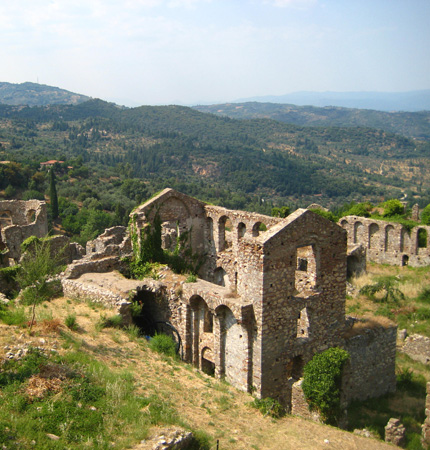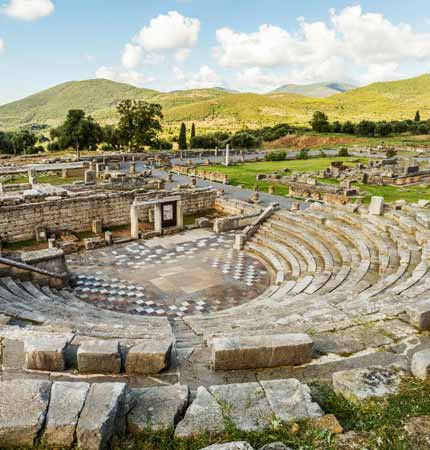Excursion Destination
Corinthos - Archeological Site
Corinth
Entrance to the Peloponnese
Ancient Corinth, located in the northeastern part of the Peloponnese, was one of the most powerful and prosperous cities of ancient Greece. It played a major role in trade, politics, and culture. Today, visitors come to see the impressive ruins of this once-great city, as well as the Corinth Canal, a modern engineering feat that connects the Aegean and Ionian Seas. Together, they offer a unique blend of ancient history and modern achievement.
In ancient times, Corinth was a wealthy city-state thanks to its strategic location between the Peloponnese and the rest of mainland Greece. The city's prosperity was built on trade and its control of both the land route. The ruins of Ancient Corinth still reflect its former glory, with several key landmarks to explore.
The Temple of Apollo is one of the most striking sights in Ancient Corinth. Built in the 6th century BC, the temple’s seven standing Doric columns stand proud and give a glimpse of what the ancient city might have looked like. Corinth was also known for its acropolis,Acrocorinth, which served as a fortress high above the city. Visitors who hike to the top are rewarded with stunning panoramic views of the area.
The Agora, or marketplace, was the bustling heart of the city in ancient times. It’s where merchants from across the Mediterranean came to trade goods, making Corinth a key commercial hub. The area also contains the remains of shops, fountains, and public buildings that once made up the city's lively center.
One of the more unique aspects of Ancient Corinth is its connection to early Christianity. The Bema of Saint Paul is an important religious site where the Apostle Paul is said to have preached to the Corinthians during his travels. The ruins of this stone platform are still visible today, making it a significant stop for those interested in Christian history.
Just a short drive from Ancient Corinth lies the Corinth Canal, one of the most impressive engineering projects of the modern era. Completed in 1893, the canal cuts through the Isthmus of Corinth and connects the Aegean Sea with the Ionian Sea. This 6.4-kilometer canal saves ships a long journey around the Peloponnese, making it an essential route for maritime trade. While the canal itself is narrow, at only about 21 meters wide, it is an incredible sight to see. The vertical limestone walls rise dramatically up to 80 meters on either side, creating a striking effect. Visitors can walk across the bridges that span the canal or even take a boat tour to get an up-close view of this engineering marvel. The more adventurous can also experience bungee-jumping from one of the canals bridges! The canal is still in use today, mainly for smaller ships and tourist vessels.
The combination of Ancient Corinth’s historic ruins and the modern Corinth Canal makes this area a fascinating place to visit from Nafplio on a taxi excursion. History enthusiasts can spend hours exploring the ruins, while those interested in engineering can marvel at the canal’s design. Together, they showcase the region’s importance from an ancient and a modern perspective.
In addition to visiting the ancient sites and the canal, the modern town of Corinth is a great place to relax and explore. It offers plenty of restaurants, shops, and cafes, where visitors can take a break and enjoy the local atmosphere. The town is also close to several beaches, so you can easily combine a historical taxi excursion from Nafplio with some time by the sea.
Have an interesting day on a taxi excursion from Nafplio to Corinth or make a stop to visit the whichever part you find more interesting, only 45 mins from Nafplio




















